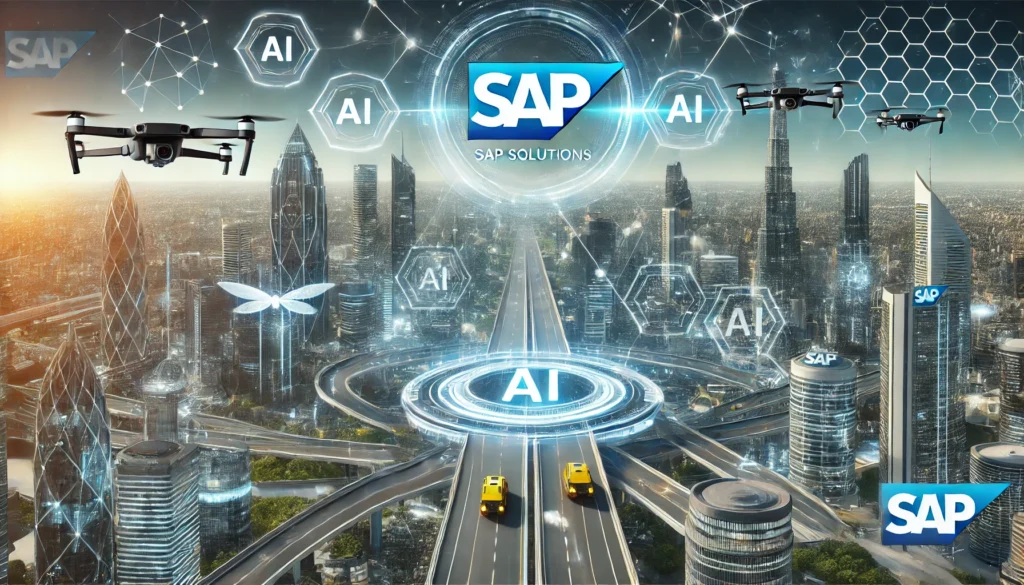Transforming Energy Management: AI’s Impact on Business

In today’s fast-paced business environment, artificial intelligence (AI) is reshaping industries across the board. One significant area where AI’s impact is profoundly felt is energy management. Effective energy management not only reduces operational costs but also enhances sustainability—a key concern for modern businesses. This article delves into the intersection of AI and energy management, offering insights, case studies, best practices, practical tips, and future trends.
Understanding Energy Management
What is Energy Management?
Energy management involves monitoring, controlling, and conserving energy within an organization. It encompasses a broad range of activities, from tracking energy consumption to optimizing energy efficiency and integrating renewable energy sources. Traditional energy management methods often struggle with complexity and inefficiency, paving the way for AI-driven solutions.
Key Components of Energy Management
- Energy Consumption Monitoring: Tracking how energy is used across different processes and systems.
- Energy Efficiency Optimization: Implementing measures to reduce energy waste and improve efficiency.
- Renewable Energy Integration: Incorporating renewable energy sources like solar and wind into the energy mix.
Challenges in Traditional Energy Management
Traditional methods rely heavily on manual processes and static data, leading to inaccuracies and inefficiencies. These methods often fail to provide real-time insights, making it challenging to adapt to changing conditions swiftly.
The Role of AI in Energy Management
Overview of AI Technologies
- Machine Learning: Algorithms that learn from data and improve over time.
- Neural Networks: Complex models that mimic the human brain’s structure.
- Predictive Analytics: Tools that forecast future energy needs based on historical data.
- Internet of Things (IoT): Network of interconnected devices that collect and exchange data. Understand IoT
Benefits of AI in Energy Management
- Enhanced Data Analysis: AI processes vast amounts of data quickly, uncovering patterns and insights that humans might miss.
- Real-Time Monitoring and Control: AI systems provide up-to-the-minute information, allowing for immediate adjustments.
- Predictive Maintenance: Anticipates equipment failures before they occur, reducing downtime and maintenance costs.
- Improved Decision Making: AI offers data-driven recommendations, helping businesses make informed energy management decisions.
Case Studies
Google’s Data Centers
Background: Google, a leader in AI innovation, applied AI to manage its energy-hungry data centers.
Implementation: By leveraging AI algorithms, Google optimized cooling systems, which are critical for data center operations.
Results: The AI implementation resulted in a 40% reduction in energy used for cooling, translating to significant cost savings and a reduced carbon footprint.
Siemens’ AI-Driven Energy Solutions
Background: Siemens, a global technology powerhouse, adopted AI to enhance its energy solutions.
AI Technologies Used: Siemens utilized machine learning and IoT to optimize energy distribution and consumption.
Impact: The AI-driven approach led to a 20% increase in energy efficiency and substantial cost savings for clients.
Enel’s Smart Grids
Background: Enel, a multinational energy company, integrated AI into its smart grid operations.
AI Integration: Enel used predictive analytics and neural networks to manage energy distribution effectively.
Outcomes: The AI system improved grid stability and efficiency, reducing energy losses and enhancing service reliability.
Best Practices in AI-Driven Energy Management

Establish Clear Objectives
Define specific goals for your AI implementation, such as reducing energy costs or improving efficiency.
Ensure Data Quality and Integration
High-quality data is crucial for AI systems. Ensure your data is accurate, consistent, and integrated across all relevant systems.
Implement Scalable AI Solutions
Choose AI solutions that can grow with your business and adapt to changing needs.
Foster Cross-Functional Collaboration
Encourage collaboration between IT, operations, and energy management teams to ensure seamless AI integration.
Continuously Monitor and Optimize AI Systems
Regularly review and adjust AI systems to maintain their effectiveness and adapt to new challenges.
Practical Tips for Implementing AI in Energy Management
Start with a Pilot Project
Begin with a small-scale project to test the effectiveness of AI solutions before full-scale implementation.
Invest in Training and Development
Ensure your team has the skills needed to manage and utilize AI technologies effectively.
Collaborate with AI Experts and Vendors
Work with experienced AI professionals and trusted vendors to get the best solutions and support.
Focus on High ROI Use Cases
Prioritize energy management applications that offer the highest return on investment.
Leverage Cloud-Based AI Solutions
Use cloud-based platforms for flexibility and scalability in managing AI solutions.
Examples of AI Applications in Energy Management
Smart Metering and Demand Response
Description: AI-powered smart meters provide detailed insights into energy consumption patterns.
AI Techniques Used: Machine learning algorithms analyze consumption data to predict demand and optimize energy distribution.
Benefits: Improved accuracy in energy billing and enhanced ability to manage peak demand periods.
Predictive Maintenance of Energy Infrastructure
Description: AI predicts when equipment is likely to fail, allowing for proactive maintenance.
AI Techniques Used: Predictive analytics and neural networks analyze equipment performance data.
Benefits: Reduced downtime, lower maintenance costs, and increased equipment lifespan.
Energy Consumption Forecasting
Description: AI forecasts future energy needs based on historical data and current trends.
AI Techniques Used: Time series analysis and machine learning models.
Benefits: Better planning and resource allocation, reducing energy wastage and costs.
Renewable Energy Optimization
Description: AI optimizes the integration and use of renewable energy sources.
AI Techniques Used: Predictive analytics and machine learning.
Benefits: Enhanced efficiency and reliability of renewable energy systems, reducing reliance on non-renewable sources.
Future Trends in AI and Energy Management
Advances in AI Technologies
Continued innovation in AI will lead to more sophisticated and effective energy management solutions.
Integration with Emerging Technologies
AI will increasingly integrate with technologies like blockchain and 5G to enhance energy management capabilities.
Regulatory and Policy Impacts
Governments and regulatory bodies will shape the adoption and implementation of AI in energy management through policies and incentives.
Evolving Business Models
AI-driven energy management will lead to new business models, focusing on sustainability and efficiency.
Conclusion
AI is revolutionizing energy management, offering businesses unprecedented opportunities to enhance efficiency, reduce costs, and promote sustainability. By embracing AI solutions, businesses can stay ahead of the curve and drive meaningful change in their energy practices.





